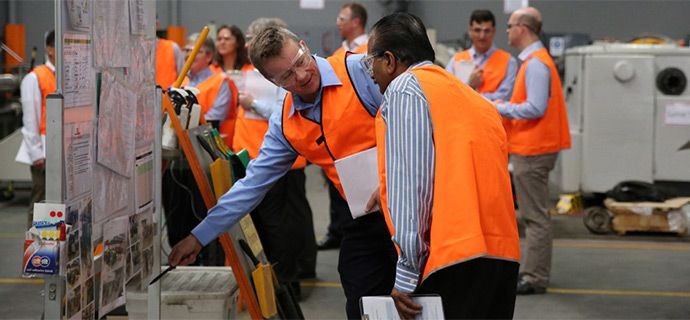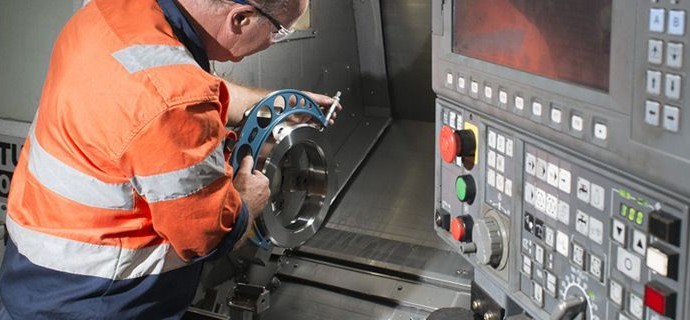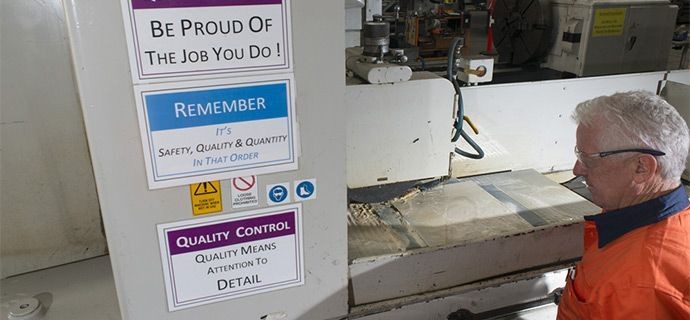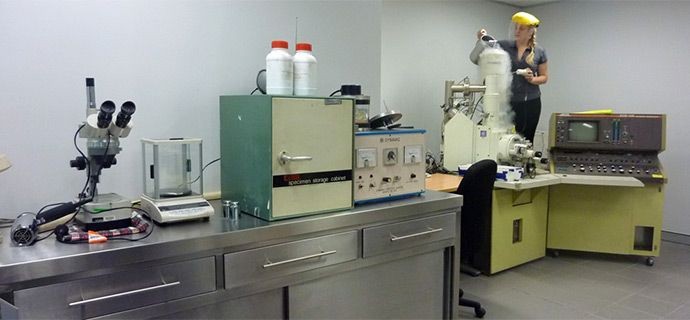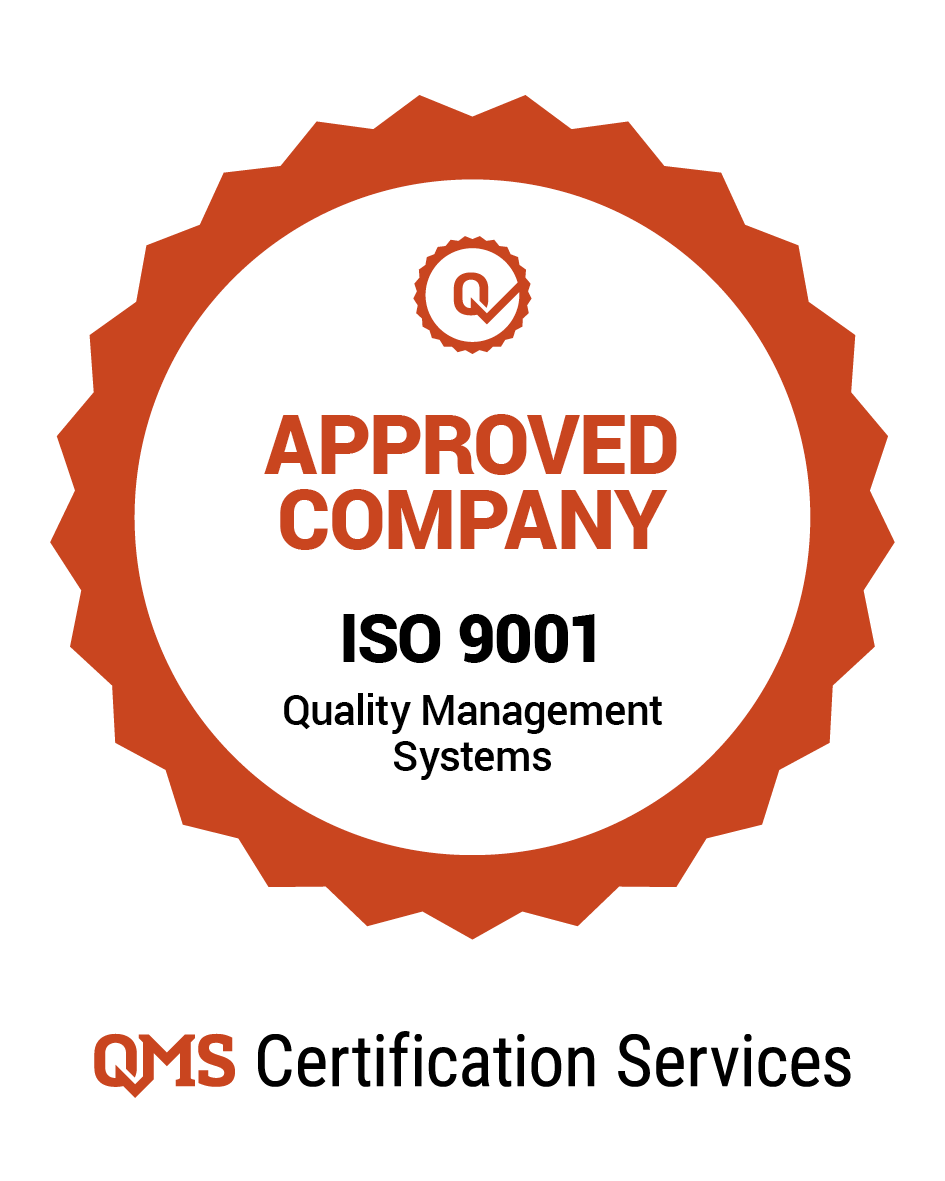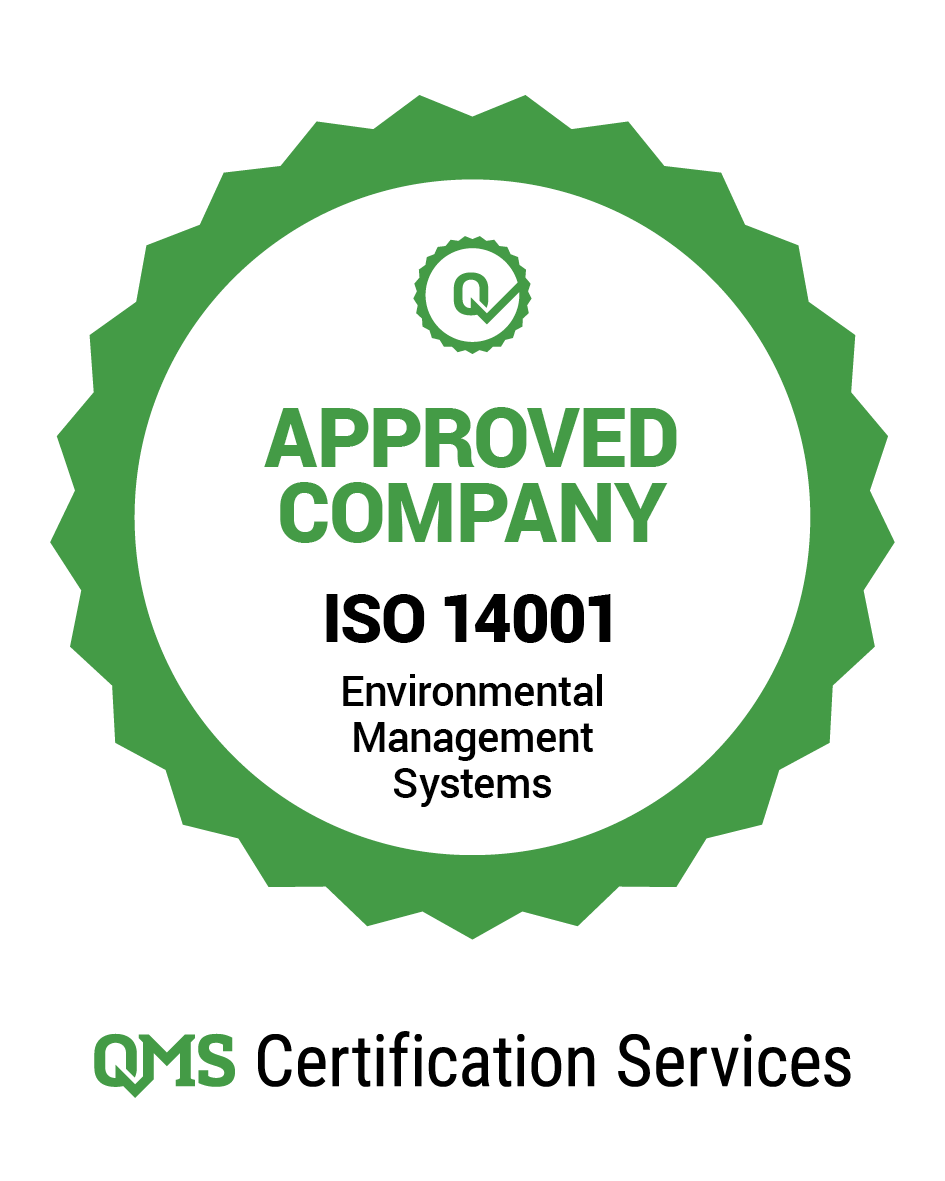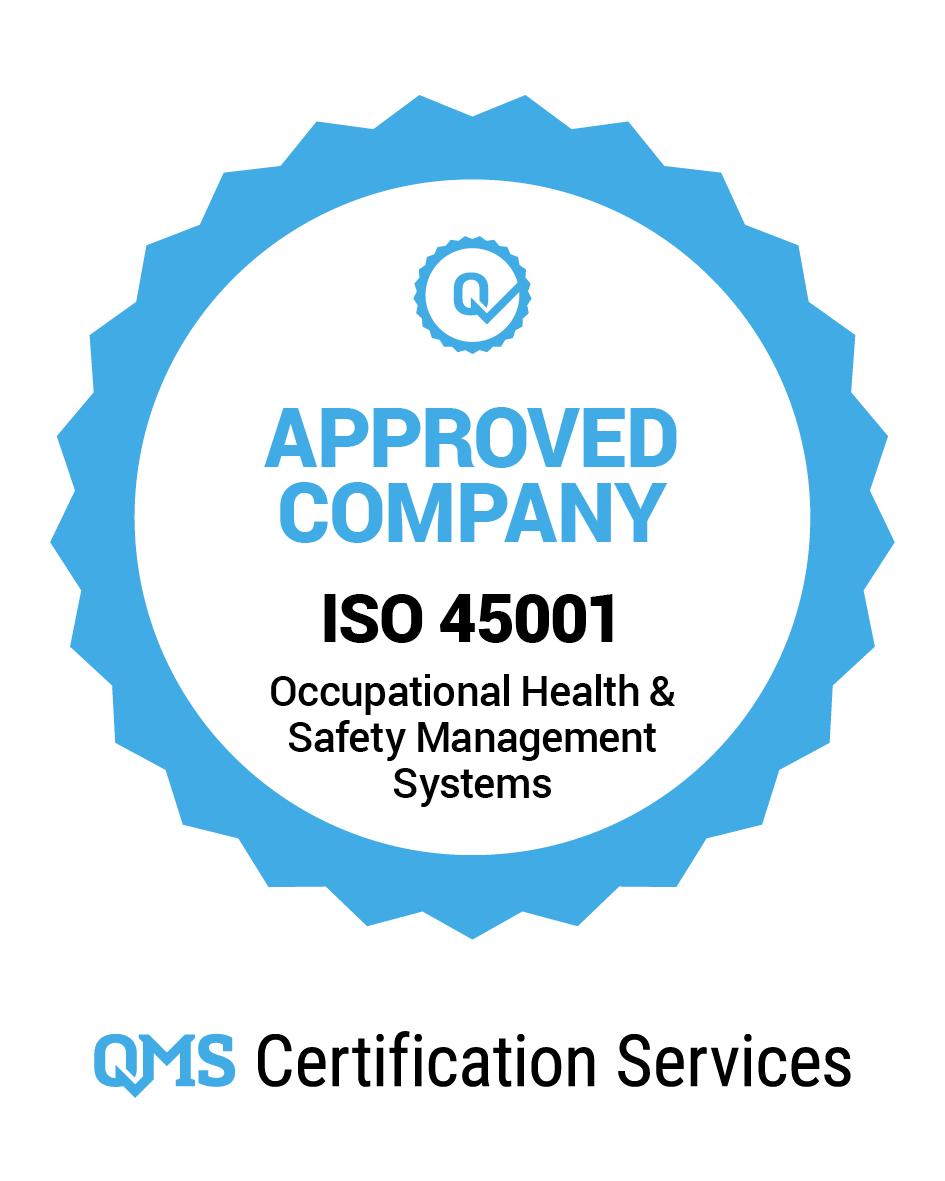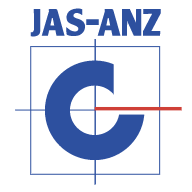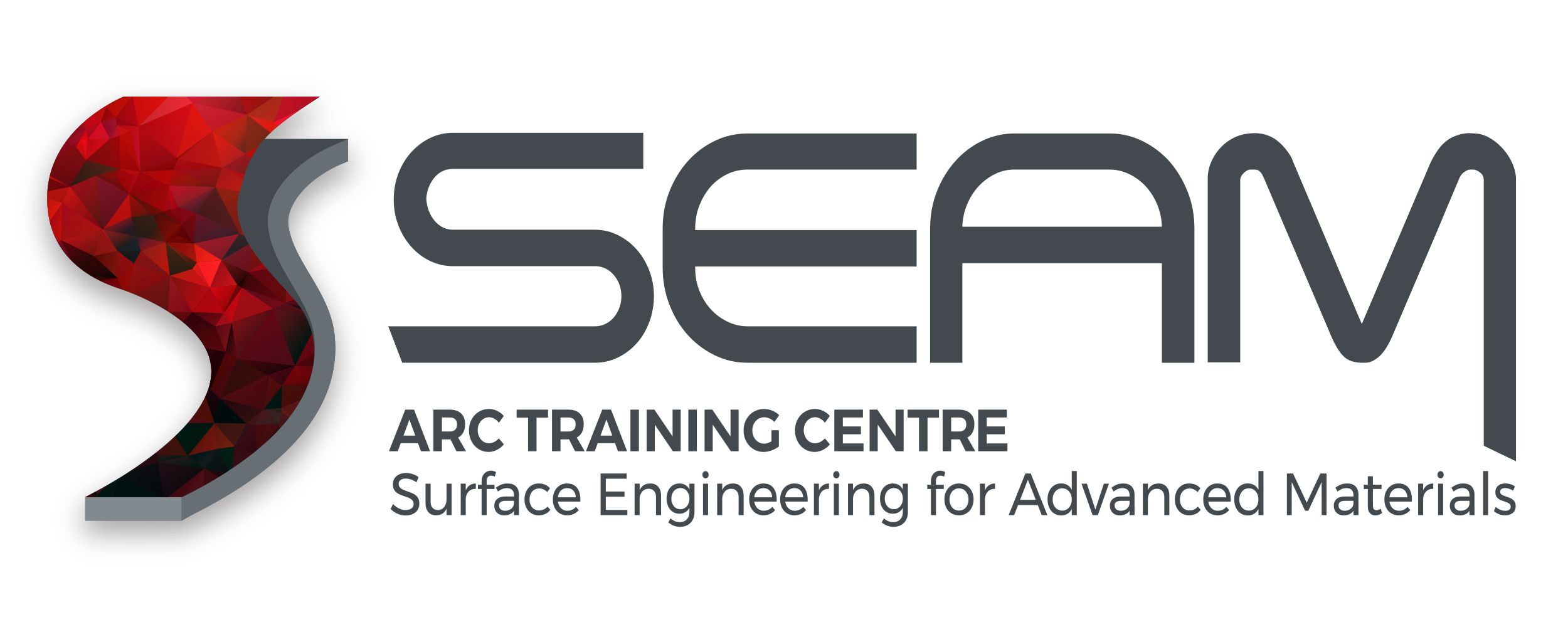Health & Safety
ISO 45001 / AS/NZS 4801 … Certified Workplace Health & Safety
LaserBond is committed to providing a safe and healthy workplace for everyone involved in our business. We manage WH&S within our PAS99 – Integrated Management System, the accredited quality, environment and safety system.
We are proud of our safety standards, programs and processes. They are designed to ensure our people work productively without compromising their health and safety. Team members work together to assess and manage risk associated with every task, utilizing our ‘Take Five’ pocket book system;
- Stop & Think
- Look for Hazards
- Assess the Risk
- Make it Safe
- Complete the Task
Our M1 production management system refers to relevant ‘Safe Operating Procedures’ and ‘Safe Work Method’ statements, which are an integral part of any LaserBond project.
Health & Safety is a key element for sustainable business and closely integrated with our engineering, quality and production. Improved Health & Safety awareness and culture result in better operational excellence and our long-term aim is zero harm to our employees and contractors.
Measuring, Monitoring and Improving
A significant initiative for 2016 is the refreshing of our safety reporting and safety KPI’s. This program aims to bring awareness and responsibility closer aligned to the management structure, with key numbers being incorporated at all reporting levels.
Health and Safety is an agenda item at every Board meeting, and we will provide an overview of our health and safety performance in our Annual Report & Financial Statements. From the Executive we demonstrate a commitment to embed health and safety within our culture, behaviours and actions at every level. Toolbox meetings focus on incident reports, reenactment and preventative action.
LaserBond’s Safety KPI is ‘Reportable Injury Frequency Rate’ (RIFR), which records the number of incidents requiring medical treatment, divided by the number of hours worked within an accounting period, multiplied by 100,000.
Sustainable Environment
ISO 14001 … A commitment to a sustainable environment
LaserBond is committed to high standards of environmental management and controls the impact of our activities, products and services on employees, our community and our environment. We seek opportunities to improve the environmental performance of our operations and those of our customers.
Evidence to our commitment is our ISO 14001 certification as it more than a sound environmental policy, it provides a framework to develop best practice helping us manage risks that impact our environmental footprint. Our process is to;
- Identify and quantify key potential risks facing the business;
- manage and minimise potentially adverse impacts;
- monitor and report on the most significant potential impacts.
It is part of our PAS99 – Integrated Management System that also incorporates Quality and Health & Safety. Our people all receive training in a range of environmental topics such as ISO 14001 requirements, compliant waste disposal, control of hazardous substances and energy usage.
Energy Efficiency…our internal KPI
Whilst only one of the environment measures we monitor, ‘Energy Efficiency’ usage is a significant input to our production process and an ideal KPI for the business.
Innovation & Climate Change
Our R&D innovation program focuses on developing new products and technologies to provide ourselves and our customers with competitive advantage.
We design innovative products and services to meet customer demands and their corporate sustainability goals through higher productivity, reduced energy consumption, water usage and waste generation.
Reclamation & Surface Engineering - The Low Carbon Alternative for Customers
Conservation of resources is core to LaserBond’s business philosophy; it is a founding objective.
Almost all wearing component wears or fails at the surface due to interaction with its environment – tribology. Our surface engineering technologies enhance this wear resistance and operating performance, which gets more productivity from machine components.
LaserBond also reclaims fatigued and worn industrial parts, improves their resistance to wear and corrosion, and increases their reliability and service life for a fraction of the cost of a replacement part.
In a world where carbon induced climate change is of concern, the abilities of LaserBond to increase the service life of industrial components provide significant opportunities. The steel industry estimates that around 30GJ of energy is required to produce one ton of steel. Through utilisation of its surface engineering technologies, LaserBond can dramatically extend the useful life of wearing industrial components without the need for replacement. A component originally manufactured from one ton of steel may typically be reclaimed and put back into service with only 1GJ of energy consumed.
Our customers win with reduced operating costs; the environment wins with reduced total carbon emissions.
Quality Assurance
ISO 9001: 2015 – Quality Assurance … the most optimising standard
Our commitment to quality allows us to meet customer and regulatory requirements while facilitating continual process improvement. It boosts productivity, reduces defects and provides more efficient services. Everyone in the value chain benefits from our focus on quality through:
- Continuous Improvement – continually ptimizing customer value;
- Exceeding Customer Expectations – providing solutions that surpass requirements;
- Meeting Delivery Dates – following through on our commitments;
- Total Quality – implementing a quality system that encompasses all aspects of our business.
In 2015 we took another step with our ISO accreditation for our PAS 99 Certification for our integrated management system incorporating Quality (ISO 9001), Environment (ISO 14001) and Workplace Health & Safety (BS OHSAS 18001 & AS/NZS 4801) systems.
Quality Assurance within the supply chain
LaserBond recognizes the products and services it offers forms a critical part of our customers’ supply chain. Like them we have management systems in place to support our lean, customer focused operations, so that input materials and processes deliver reliable, high quality components.
The collaborative relationships we build with our suppliers and our customers based on mutually beneficial continuous improvement programs. These programs cover;
- Quality Management Systems
- Production (EPR – MRP) Management Systems
- Project Management
- Resource Capability
- Financial Viability
- WH&S – Environment – Sustainability
Quality Management Process
Several KPI’s are used to measure, manage and monitor LaserBond’s quality; ‘Non-conformance to Specification’ is our primary internal QA measure with its associated ‘Corrective & Preventative Actions’.
We guarantee the quality of our work so any customer complaint received offers us an opportunity to review and improve internal quality management processes.
LaserBond distills its QA performance into two key measures;
- Conforming Parts / Million delivered (CPPM) – Current target is 99.8%
- On-time Deliveries (OTD) – Current target is 98%
Lean 5S Manufacturing
The foundation of business improvement
Our facility is designed to meet the standards of Lean 5S Manufacturing.
The 5S process is a very simple methodical team-based approach to organising our work space to ensure that it is tidy, arranged ergonomically, efficient and capable of repeatable, quality output. Developing uniform processes and applying them consistently throughout our manufacturing process is a challenge we welcome; it ensures that our customers get the quality they demand. Strict process controls mean that we can be confident the products we deliver meet customers’ exacting specifications, time after time.
Since full implementation LaserBond has realised measurable improvements in quality, on-time delivery, waste and organisation culture. Lean 5S is applied throughout the company from the front desk to the despatch dock.
Project Management
Project Management
LaserBond production and project management is built around its M1 – Manufacturing Resource Planning system. This system plans and tracks progress against schedule from quotation to delivery and invoicing. We utilize it to optimize our supplies and internal resources.
On-time delivery is a key KPI for LaserBond and core to our ISO 9001 - Quality Assurance and associated Lean 5S Manufacturing processes.
From design to delivery
We believe in partnering with our customers to benefit both parties. By involving LaserBond early in the product development or problem solving process our customers are assured the desired outcome can be produced efficiently and cost-effectively.
We assist and contribute to maintenance program and product planning. In design our process is to clarify function, develop the product design, prototype and testing, and final product production – we’re able to ensure quality production.
Maintenance Shutdown Planning – Power Generation
Taking a power generation unit offline for scheduled maintenance involves many sub-contractors and parts suppliers. Involvement of service operations team allows the principal contractor to plan fast turnaround of repairs and rebuilds.
Manufacturing Parts Inventory – Pump Wear Components
Our technology is embedded into a number of high wear resistant pump parts we manufacture for leading OEMs. Applying our ‘Lean 5S’ program, we have reduced lead-time and inventory costs.
Understanding the Commercial & Technical Problem
Understanding the problem directly informs the solution. We take the time to work with our customers to analyse the problem, to identify unique characteristics, to consider the metallurgical options. Then we develop and deliver a wear-life improvement solution that is mechanically and financially viable.
R&D Innovation
Development and Design… innovations that improve performance and productivity.
Surface engineering is in our DNA and fuels our passion for new surface engineering metallurgy, technologies and techniques that will extend wear lifespan and improve the performance of components and equipment.
We have a dedicated Research and Development team that is backed by more than 30 years experience in industrial tribology and the impacts and effects of abrasion, erosion and corrosion. Our team investigates the reasons and effects of high wear and component failure and finds solutions utilizing our expertise in metallurgy and powder coating application technology. Embedding innovation into product and service development helps our customers increase resource efficiency, operate more safely and reduce environment impact.
Continued Reinvestment in R&D
Throughout our history LaserBond has continuously reinvested in our R&D program, with R&D expenditure being a KPI of our business. With the growing acceptance of surface-engineered components for wear applications LaserBond has a collaboration agreement with UniSA: Future Industries Institute to pursue deeper science on both metallurgy and application methodologies.
R&D Investment – Current target for direct investment is 5% of Sales Revenue. Working with industry collaboration partners, like University of SA and key customers we also access government grants that provide a multiplier effect; they turn our $1 of R&D spend into $2 or $3, which accelerates or expands outcomes. University of SA - Future Industries Institute signs LaserBond and other News Articles.
Inventing New Laser Deposition Process - International Patents
Our R&D team invented a new method for depositing thin, metallurgically bonded, coatings to structural substrate metals using laser systems.
It resulted in two ground-breaking patents associated with using advanced additive manufacturing methods to deliver a major improvement in wear-life performance of capital intensive equipment. The commercial implications of the new technologies are; further improvements to wear-life, faster deposition rates, thinner coatings and better economics. This opens up more industrial applications to the benefits of surface engineering.
Designing New Surface Coatings
LaserBond's material scientists work with customers to develop a tailored solution for their specific surface engineering requirements.
A customer describes their components appliciation and desired surface properties. We learn more the environment the coating will be used in, and then design the properties required to withstand the environment.
LaserBond applies its extensive materials engineering expertise to design a coating and method solution to fulfil components specific duty. We have access to a materials and alloy database of some 1 million variants.
Combining a well engineered coating material and component design delivers longer life higher performance outcomes at least cost.
Product Innovations – LaserBond DTH Hammer
We were introduced to a high wear cost component of drill and blast operations in mining. Against the background of need to reduce costs, LaserBond engineers have redesigned the down-the-hole (DTH) hammer to deliver a wear-life innovation that extends operating life more than 3 times that achieved by industry-leading brands. Along with a host of production benefits, 60% savings on hammers and an overall 7.5% on total drilling costs are a reality.
New (Cladding) Application– Hydraulic Cylinder Recladding
Hard-chrome is a long-standing method of providing corrosion resistant, high polished surfaces on hydraulic cylinders however a hard-chrome finish does not perform well in high impact environments and has recognised environmental issues. To meet the challenge of finding a comparable, high-polish and hard-wearing finish, LaserBond developed a new, more efficient laser cladding process that is proving a superior and more economic replacement.
Understanding Wear Mechanics – New Mining Picks
Efficient mechanical mining processes are driven by the wear-life of ground engaging tools; in part the consumable cost, mostly the downtime to change them. To optimise productivity, these tools need the protection of tough, wear-resistant surface engineering technology. By taking a ‘whole problem’ approach LaserBond is able to develop a class of surface engineered mining picks which incorporates our patent cladding technology to cut rock faster – and for longer.
Better Metallurgy – Bark (Stone) Blower Reengineered
At LaserBond we understand the cause, not only the effect, of surface wear. What makes some metals and surfaces more susceptible to wear than others? What is the cause behind the effect? Components in high-temperature high-load operating environments can face extremes of mechanical stress. OEMs account for these extremes when designing equipment but ultimately wear and physical erosion – and potential component failure - will be experienced. We have applied the metallurgical knowledge of more than 20 years surface engineering experience to remanufacture heavy-duty drive units for off-road haul trucks - to keep them moving and productive.
Development and Design… innovations that improve performance and productivity.
Surface engineering is in our DNA and fuels our passion for new surface engineering metallurgy, technologies and techniques that will extend wear lifespan and improve the performance of components and equipment. For many decades we've seen the aerospace and automotive industry advance rapidly with new materials, surface engineering and additive manufacturing processes; LaserBond is leading in the heavy industry and resources sector.
Our R&D team is backed by more than 30 years experience in industrial tribology, in particular on the impacts and effects of multi-modal wear in aggressive heavy industrial environments. LaserBond's R&D work is directed towards expanding three surface engineering skill sets that are the core DNA of LaserBond:

- Tribology of Wear in Heavy Industrial - Aggressive Conditions: Working with University of South Australia: Future Industries Institute (UniSA:FII) and our CRCp collaboration we will develop a world class heavy industry wear laboratory. It's being equipped with multiple standardised wear tesring units, plus a custom rig that reflects problematic conditions found with drilling and processing of acidic, hard rock types with extremely high velocity particles (found in wet drilling and slurry pumps).
- Advanced Metallurgy & Cladding Materials - Powdered Metal: Using new metal powders, some with modified characteristics combined with more economical application technology, LaserBond material scientists are able to develop new cladding materials tailored to better understand wear mechanics. Our collaboration with UniSA:FII enables the team to analyse and characterise materials and bonding.
- Application Methodologies - Additive Manufacturing: LaserBond uses a suite of additive manufacturing technologies. Efficient high-power diode lasers and new thermal spray processes are leveraging the knowledge of materials. We are discovering new ways of applying cladding, with higher efficiency. By building our own machinery we have extended the applications that can now benefit from surface engineering.
The team investigates the reasons and effects of high wear and component failure, then finds solutions utilising our expertise in metallurgy and powdercoating application technology. Embedding innovation into product and service development helps our customers increase resource efficiency, operate more safely and reduce environment impact.
Continued Reinvestment in R&D
Throughout our history LaserBond has continuously reinvested in our R&D program, with R&D expenditure being a KPI of our business. With the growing acceptance of surface-engineered components for wear applications LaserBond has a collaboration agreement with UniSA: FII to pursue deeper science on both metallurgy and application methodologies.
The current target for direct R&D investment is 5% of sales revenue. Working with industry collaboration partners like University of South Australia and key customers, we also access government grants that provide a multiplier effect - they turn our $1 of R&D spend into $2 or $3, which accelerates or expands outcomes.
University of SA - Future Industries Institute signs LaserBond and other News Articles.
Cooperative Research - CRCp
In February 2017 a collaboration led by LaserBond was awarded a $2.616 million government funding grant to support a CRCp project for "Wear life extension via surface engineered laser cladding for mining."
In conjunction with these R&D activities, LaserBond and Boart Longyear also have a strategic partnership to pursue mutually beneficial commercial products and services. University of South Australia and LaserBond have a collaborative R&D agreement for the development of technology, systems, processes and applications associated with wear-resistant surface engineered cladding for resource, agricultural and other heavy industries.
It's an important foundational step towards improving productivity in mining through mutually beneficial collaboration.
Inventing New Laser Deposition Process - International Patents
Our R&D team invented a new method for depositing thin metallurgically bonded coatings to structural substrate metals using laser systems.
It resulted in groundbreaking patents associated with using advanced additive manufacturing methods to deliver a major improvement in wear life performance of capital intensive equipment. The commercial implications of the new technologies are further improvements to wear life, faster deposition rates, thinner coatings and better economics. This opens up more industrial applications to the benefits of surface engineering.
Designing New Surface Coatings
LaserBond's material scientists work with customers to develop a tailored solution for their specific surface engineering requirements.
A customer describes their components application and desired surface properties. We learn more about the environment the coating will be used in, and then design the properties required to withstand the environment.
LaserBond applies its extensive materials engineering expertise to design a coating and method solution to fulfil a component's specific duty. We have access to a materials and alloy database of some 1 million variants.
Combining a well-engineered coating material and component design delivers longer life higher performance outcomes at the lowest cost.
Advanced Manufacturing Laser Cladding Cell - Patents
Our Technology team has registered further patents on a suit of developments associated with our new high-capacity advanced laser manufacturing cell. This unit is designed to manage heavy industrial components up to 20 tonnes, 2m in diameter and up to 5.5m long. Developments becomes necessary to accommodate the long-running time at high power settings available with our new 16kW laser.
We developed our own water-cooled, off-axis powder injection nozzle. This incorporates a rapidly replaceable powder injection tube and gas depressurized gravity-fed powder mixer to enable us to manage the intense heat accumulating in the laser head.
Another is the work piece manipulators for heavy components. They are not commercially available, nor able to coordinate fine movements necessary for close positional control for laser focusing and power control required for consistent high-quality additive manufacturing. LaserBond designs and builds units to handle high loading and high temperature (preheated) components that deliver precise relative movement control when integrated with the long reach robot head.
New proprietary control software integration and HMI has been developed to support the advancements. It incorporates secure connections that enable our licencees and technical support staff to provide analysis, parameter settings and training remotely.

